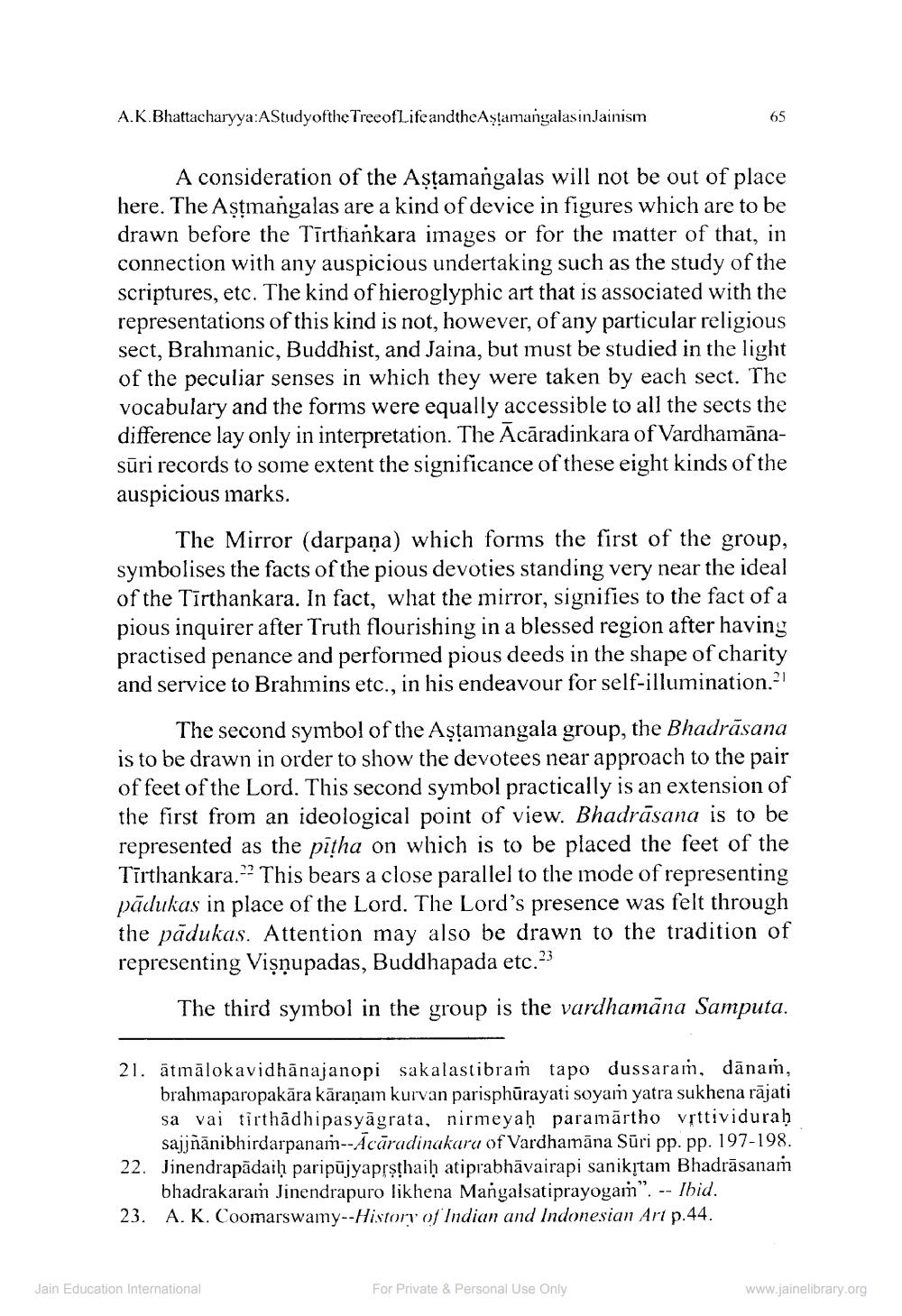________________
A.K.Bhattacharyya:AStudyofthe TreeofLife andtheAstamangalas inJainism
A consideration of the Aṣṭamangalas will not be out of place here. The Aṣṭmangalas are a kind of device in figures which are to be drawn before the Tirthankara images or for the matter of that, in connection with any auspicious undertaking such as the study of the scriptures, etc. The kind of hieroglyphic art that is associated with the representations of this kind is not, however, of any particular religious sect, Brahmanic, Buddhist, and Jaina, but must be studied in the light of the peculiar senses in which they were taken by each sect. The vocabulary and the forms were equally accessible to all the sects the difference lay only in interpretation. The Acaradinkara of Vardhamanasūri records to some extent the significance of these eight kinds of the auspicious marks.
65
The Mirror (darpaņa) which forms the first of the group, symbolises the facts of the pious devoties standing very near the ideal of the Tirthankara. In fact, what the mirror, signifies to the fact of a pious inquirer after Truth flourishing in a blessed region after having practised penance and performed pious deeds in the shape of charity and service to Brahmins etc., in his endeavour for self-illumination.2
The second symbol of the Aṣṭamangala group, the Bhadrasana is to be drawn in order to show the devotees near approach to the pair of feet of the Lord. This second symbol practically is an extension of the first from an ideological point of view. Bhadrasana is to be represented as the pitha on which is to be placed the feet of the Tirthankara. This bears a close parallel to the mode of representing padukas in place of the Lord. The Lord's presence was felt through the padukas. Attention may also be drawn to the tradition of representing Visnupadas, Buddhapada etc.
23
The third symbol in the group is the vardhamana Samputa.
21. ātmālokavidhanajanopi sakalastibram tapo dussaram, dānam, brahmaparopakāra kāraṇam kurvan parisphūrayati soyam yatra sukhena rājati sa vai tirthadhipasyāgrata, nirmeyaḥ paramartho vrttivi duraḥ sajjñānibhirdarpanam--Acaradinakara of Vardhamana Sūri pp. pp. 197-198. 22. Jinendrapadaiḥ paripujyapṛṣṭhaiḥ atiprabhāvairapi sanikṛtam Bhadrasanaṁ bhadrakaram Jinendrapuro likhena Mangalsatiprayogam". -- Ibid. 23. A. K. Coomarswamy--History of Indian and Indonesian Art p.44.
Jain Education International
For Private & Personal Use Only
www.jainelibrary.org




